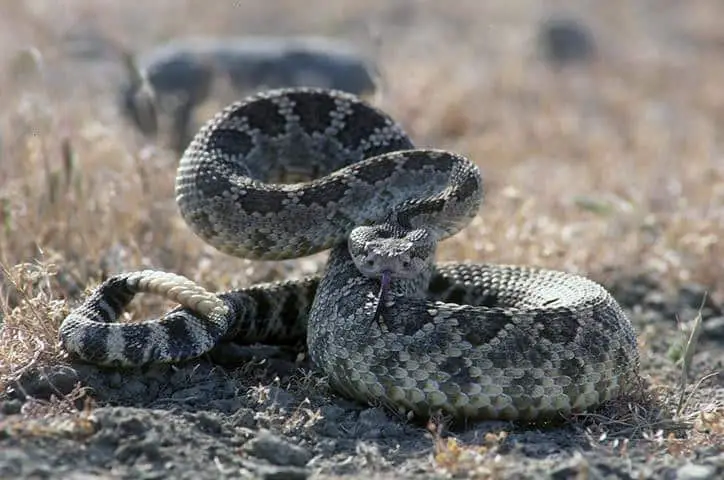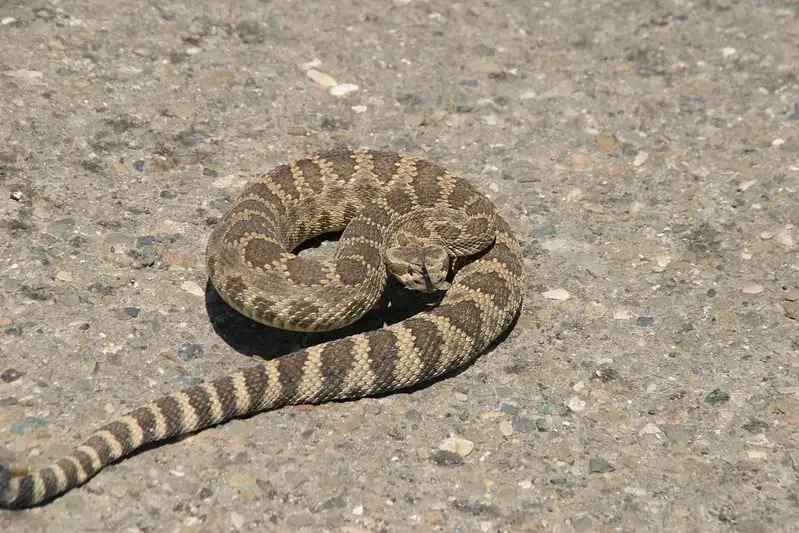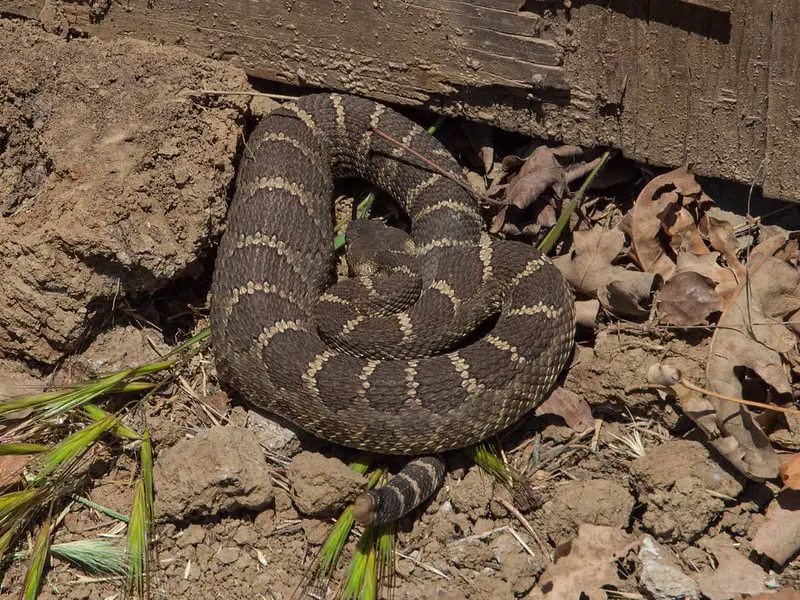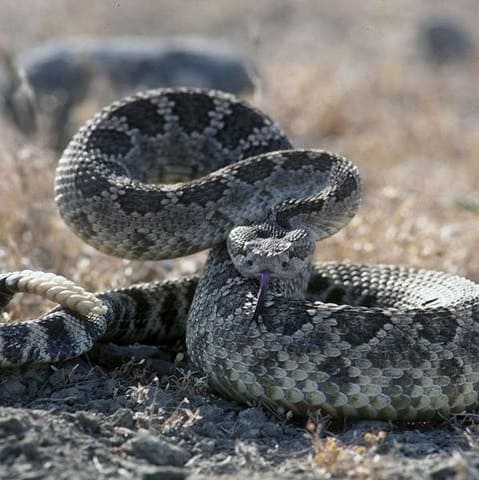Crotalus oreganus, commonly called the (Northern) Pacific rattlesnake is a venomous rattlesnake found in Western America from British Columbia in Canada to Northwestern Mexico. Historically, the Pacific rattlesnake was considered a subspecies of the Western rattlesnake (Crotalus viridis).

Description
Size
The Pacific rattlesnake is a relatively large species of rattlesnake. The length of different specimen can vary greatly depending on the region and subspecies. The average length is about 39 inches (100 cm). The longest ever recorded specimen was 64 inches (163 cm).
Pattern
The base color of the Pacific rattlesnake is light or dark brown, dark grey, sometimes also black or light yellowish (in juveniles). The snake has a series of large, dark blotches with irregular white or cream-colored borders on its back. The blotches are wider than the areas between them. In addition, the species has other dark blotches on the sides, often darker than the blotches on the back and are clearly visible even in very dark individuals. Towards the tail, the Pacific rattlesnake has several rings. The first tail rings have the same color as the back blotches, but become darker towards the back until the last two, which are usually black. The belly side is light yellow with brown speckles.

The appearance of the Pacific rattlesnake shows a wide onthogenetic variation. That means that the appearance of the snake changes greatly considerably over its lifecycle. Young snakes, for example, usually have very distinct patterns with a white or cream-colored background that fade in the course of development. With increasing age, the snake becomes darker and the blotches less clearly visible.
Hunting Behavior
As other rattlesnakes, Crotalus oreganus feeds on small mammals such as rats, rabbits and squirrels, birds as well as smaller reptiles and other snakes. After having found a suitable spot, this mostly nocturnal hunter waits in ambush for passing prey. As soon as a prey is in striking range, the snake deals a lethal bite. Quick-moving mammals are generally able to break free from the bite and flee. However, the strong venom will soon immobilize them. The rattlesnake uses its heat sensors to follow the heat trace of the wounded prey. The paralyzed prey is consumed as a whole. Since reptiles do not leave a heat trace the snake could follow, it usually holds onto them directly after the bite until the venom takes effect.
Bite and Venom
The Pacific rattlesnake disposes of a strong venom with haemotoxic and neurotoxic properties. Symptoms of a bite include local pain, swelling as well as necrosis. In addition, the venom can cause strong headaches, internal bleeding and cardiovascular issues.
If you are bitten by a rattlesnake, try to remain calm. Do not tie off the affected area and do not stop the bleeding if you are bleeding. Try to keep your heart rate as low as possible and get medical attention as soon as possible. The person who got bitten should move as little as possible. Either take a car to the nearest hospital, or if you are on foot, call an ambulance.

Habitat
The Pacific rattlesnake thrives in a wide variety of habitats from forests to dry flatlands. It can be found at elevations near sea level up to 8,000 feet (2,500 m) above sea level.
Pacific rattlesnake range in the USA
The Pacific rattlesnake can be found in the Western United States in the following states: Washington, Oregon, California, western Colorado, southern and western Idaho, Nevada, Utah, Arizona, parts of New Mexico and Wyoming.
Scientific classification of Crotalus oreganus
- Kingdom: Animalia
- Phylum: Chordata
- Class: Reptilia
- Order: Squamata
- Suborder: Serpentes
- Family: Viperidae
- Subfamily: Crotalinae
- Genus: Crotalus
- Species: Crotalus oreganus
Subspecies of the Pacific Rattlesnake
Currently, seven subspecies of the Pacific rattlesnake are known:
- Crotalus oreganus abyssus – Arizona in the Grand Canyon on the Colorado River
- Crotalus oreganus caliginis – Mexico on South Coronado Island
- Crotalus oreganus cerberus – Arizona from the Hualpi Mountains and Cottonwood Cliffs in the northwest of the state to the Santa Catalina, Rincon, Pinaleno and Blue Mountains, and Steeple Rock in the far west of New Mexico
- Crotalus oreganus concolor – In the Colorado and Green River Basins of southwestern Wyoming and Utah east of 111° West and eastern Colorado
- Crotalus oreganus helleri – Southern California and in Mexico on the northern Baja California, west of the desert
- Crotalus oreganus lutosus or Great Basin Rattlesnake – in the Great Basin region of Idaho, Arizona west and east of the Colorado River, Nevada, Eastern California and Oregon
- Crotalus oreganus oreganus – from the Pacific coast near British Columbia, Canada, to Southern California
Other common names
Next to its most common name, the Pacific rattlesnake, Crotalus oreganus is commonly also known under the following names: Northern Pacific rattlesnake, California rattlesnake, Great Basin rattlesnake, Missouri rattlesnake, Oregon rattlesnake, black rattlesnake, black diamond rattlesnake, black snake, confluent rattlesnake, Hallowell’s rattlesnake, southern rattlesnake, western black rattlesnake, and western rattler.
